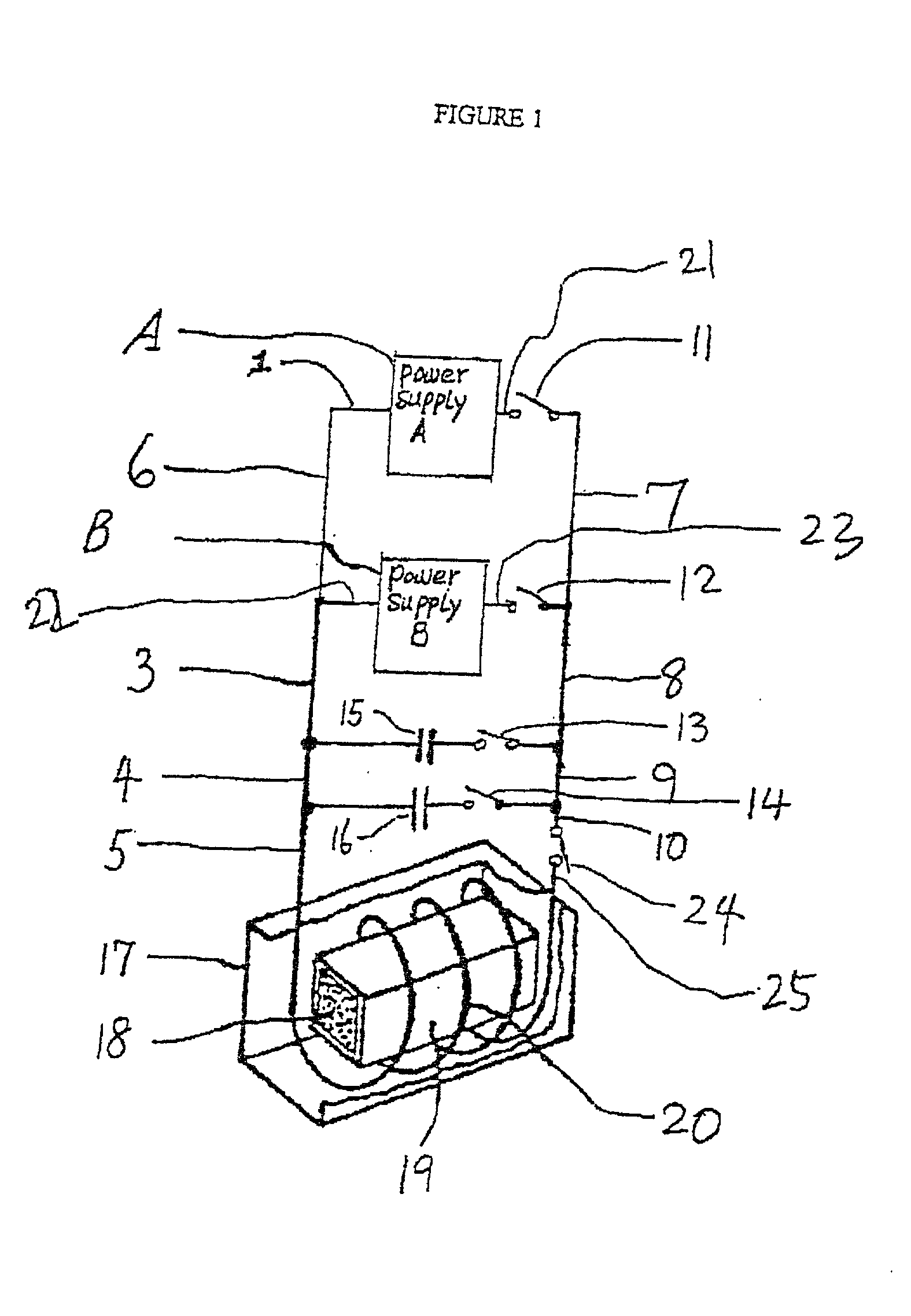Method for producing & manufacturing density enhanced, DMC, bonded permanent magnets
a technology of enhanced manufacturing density and bonded permanent magnets, which is applied in the direction of magnetic bodies, electric/magnetic/electromagnetic heating, and therapy. it can solve the problems of inability to produce with conventional manufacturing methods, increase in molecular weight of resin components, and change in composition properties, so as to improve compatibility, improve the effect of mechanical strength and high melting poin
- Summary
- Abstract
- Description
- Claims
- Application Information
AI Technical Summary
Benefits of technology
Problems solved by technology
Method used
Image
Examples
Embodiment Construction
Typical Binders: METAL BINDER: Copper, Cobalt, Nickel, Tin, Silver, Bismuth THERMOSET RESINS: Epoxy, Acrylic, Phenolic THERMOPLASTIC RESINS: Polyamides, Polyesters, PPS, PVC, LDPE ELASTOMERS: Nitrile, Rubber, Vinyl CompressionDynamic Magnetic Process Molding Injection Molding Extrusion Molding Calendering Compaction (DMC) Binder THERMOSET THERMOPLASTIC ELASTOMERS or ELASTOMERS METAL BINDERS or RESINS or RESINS THERMOPLASTIC THERMOSET RESINS or METAL BINDERS RESINS THERMOPLASTIC RESINS End Rigid Rigid Rigid with Flexible Rigid Product thermoplastic resins and flexible with elastomers Magnetic Powders Typical Maximum Energy Product (BH).sub.max(MGOe) NdFeB(isotropic) 9-10 4-6 4-8 3-5 10-14 NdFeB(anisotropic) 14-16 N / A N / A N / A 15-22 SmCo.sub.5 8-12 4-9 4-10 N / A 10-14 Sm(CoCuFeZy).sub.z 13-17 6-10 6-10 N / A 16-23 Ferrite N / A 1-1.8 1-1.8 0.6-1.8 1.5-3.5 Ferrite / NdFeB hybrids N / A 2-6 2-6 N / A 3-14 SmFeN 8-15 N / A N / A N / A 1-22
[0214] While there is no particular restriction on the average part...
PUM
| Property | Measurement | Unit |
|---|---|---|
| temperature | aaaaa | aaaaa |
| particle sizes | aaaaa | aaaaa |
| curie temperature Tc | aaaaa | aaaaa |
Abstract
Description
Claims
Application Information
 Login to View More
Login to View More - R&D
- Intellectual Property
- Life Sciences
- Materials
- Tech Scout
- Unparalleled Data Quality
- Higher Quality Content
- 60% Fewer Hallucinations
Browse by: Latest US Patents, China's latest patents, Technical Efficacy Thesaurus, Application Domain, Technology Topic, Popular Technical Reports.
© 2025 PatSnap. All rights reserved.Legal|Privacy policy|Modern Slavery Act Transparency Statement|Sitemap|About US| Contact US: help@patsnap.com



